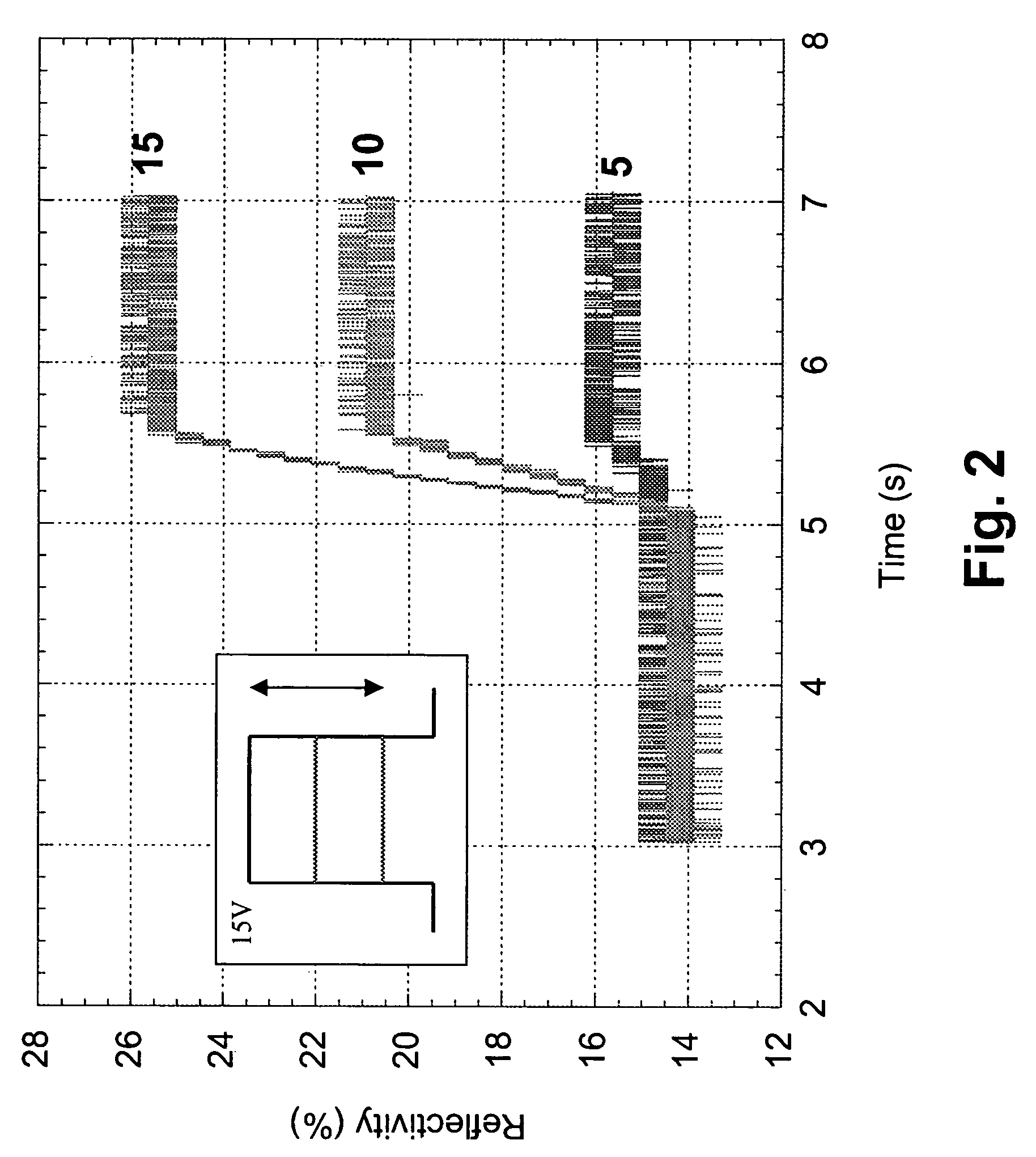Methods for driving electro-optic displays, and apparatus for use therein
a technology of electro-optic displays and apparatus, applied in the direction of electric digital data processing, instruments, computing, etc., can solve the problems of preventing their widespread use, inadequate service life of these displays, and giving rise to their own problems
- Summary
- Abstract
- Description
- Claims
- Application Information
AI Technical Summary
Benefits of technology
Problems solved by technology
Method used
Image
Examples
example 1
[0054]This Example uses displays containing an encapsulated dual particle opposite charge type medium comprising a polymer-coated titania white particle and a polymer-coated black particle with an uncolored suspending fluid. The displays were prepared substantially according to “Method B” described in Paragraphs [0061]–[0068] of the aforementioned 2002 / 0180687.
[0055]The displays prepared as described above, which contained multiple pixels, could be switched between their black and white optical states using addressing pulses of ±15 V for 500 msec. The displays had only limited bistability, the time necessary for the white optical state to change by 2 L* units being only about 15 sec. at ambient temperature. However, it was determined empirically that the white and black optical states could be maintained indefinitely by applying short refresh pulses of ±15 V for 4 sec / min, a duty cycle of approximately 6.7 percent. To provide a realistic test and avoid flicker in a standard image (c...
PUM
| Property | Measurement | Unit |
|---|---|---|
| frequency | aaaaa | aaaaa |
| voltage | aaaaa | aaaaa |
| optical state | aaaaa | aaaaa |
Abstract
Description
Claims
Application Information
 Login to View More
Login to View More - R&D
- Intellectual Property
- Life Sciences
- Materials
- Tech Scout
- Unparalleled Data Quality
- Higher Quality Content
- 60% Fewer Hallucinations
Browse by: Latest US Patents, China's latest patents, Technical Efficacy Thesaurus, Application Domain, Technology Topic, Popular Technical Reports.
© 2025 PatSnap. All rights reserved.Legal|Privacy policy|Modern Slavery Act Transparency Statement|Sitemap|About US| Contact US: help@patsnap.com



